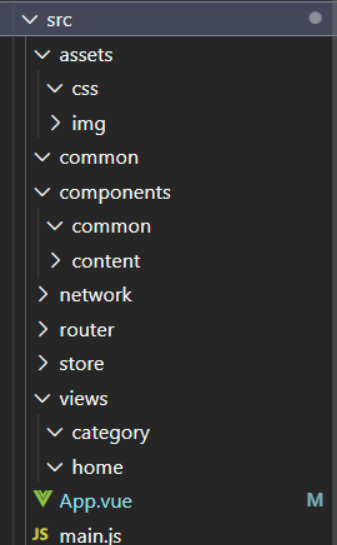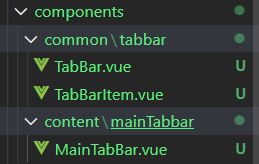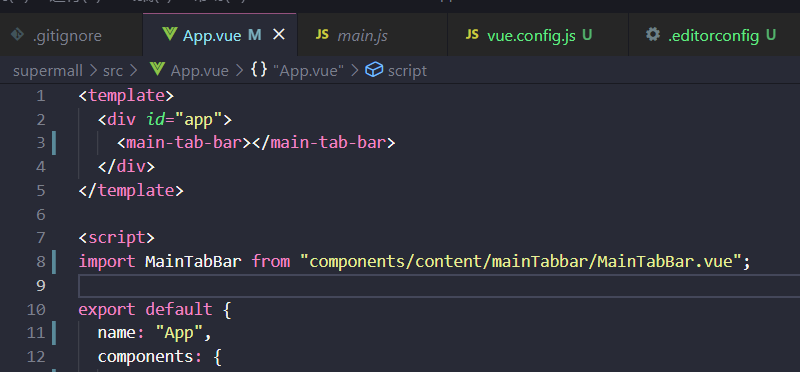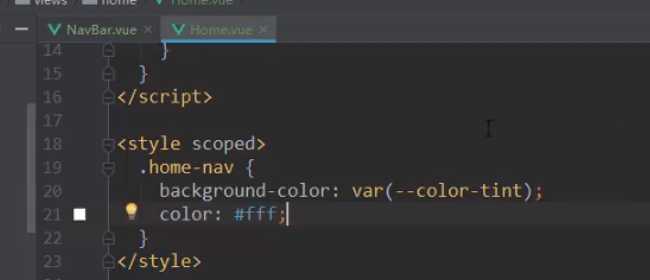
normalize.css- > 对css进行初始化,对标签的风格进行了统一
module.exports = {
configureWebpack: {
resolve: {
alias: {
‘assets‘: ‘@/assets‘,
‘common‘: ‘@/common‘,
‘components‘: ‘@/components‘,
‘network‘: ‘@/network‘,
‘views‘: ‘@/views‘,
}
}
}
}
root = true
[*]
charset = utf-8
indent_style = space
indent_size = 2
end_of_line = lf
insert_final_newline = true
trim_trailing_whitespace = true


配置路由,项目的模块划分:tabbar -> 路由映射关系
下载 npm install vue-router --save
配置index.js文件
import Vue from ‘vue‘
import VueRouter from ‘vue-router‘
const Home = () => import(‘../views/home/Home‘)
const Category = () => import(‘../views/category/Category‘)
const Cart = () => import(‘../views/cart/Cart‘)
const Profile = () => import(‘../views/profile/Profile‘)
// 1.安装插件
Vue.use(VueRouter)
// 2.创建router
const routes = [
{
path: ‘‘,
redirect: ‘/home‘
},
{
path: ‘/home‘,
component: Home
},
{
path: ‘/category‘,
component: Category
},
{
path: ‘/cart‘,
component: Cart
},
{
path: ‘/profile‘,
component: Profile
}
]
const router = new VueRouter({
routes,
mode: ‘history‘
})
//3.导出路由
export default router
只需要在public文件下的favicon.ico修改

在components的common下创建navbar文件夹,创建NavBar.vue文件
<template>
<div class="nav-bar">
<div class="left"><slot name="left"></slot></div>
<div class="center"><slot name="center"></slot></div>
<div class="right"><slot name="right"></slot></div>
</div>
</template>
<script>
export default {
name: "NavBar"
}
</script>
<style scoped>
.nav-bar {
display: flex;
height: 44px;
line-height: 44px;
text-align: center;
box-shadow: 0 1px 1px rgba(100,100,100,.1);
}
.left, .right {
width: 60px;
}
.center {
flex: 1;
}
</style>
公共的css可以在封装的导航栏组件里配置,不同页面的导航栏不同的样式可以字该页面的组件中进行css配置,
比如home页面里导航栏的背景颜色是粉色

原文:https://www.cnblogs.com/107w/p/14829728.html